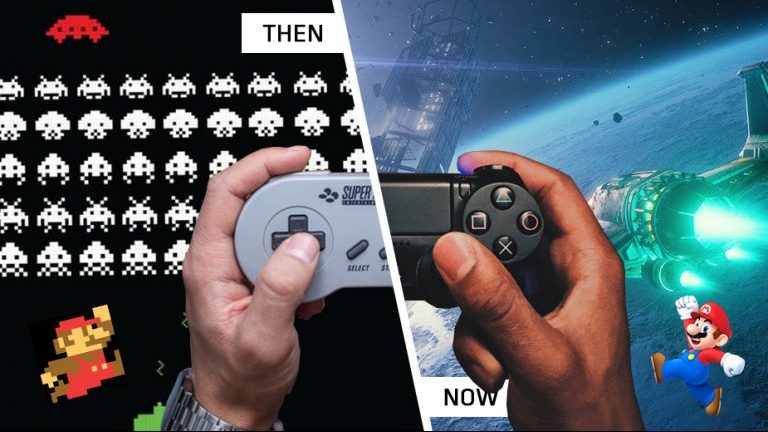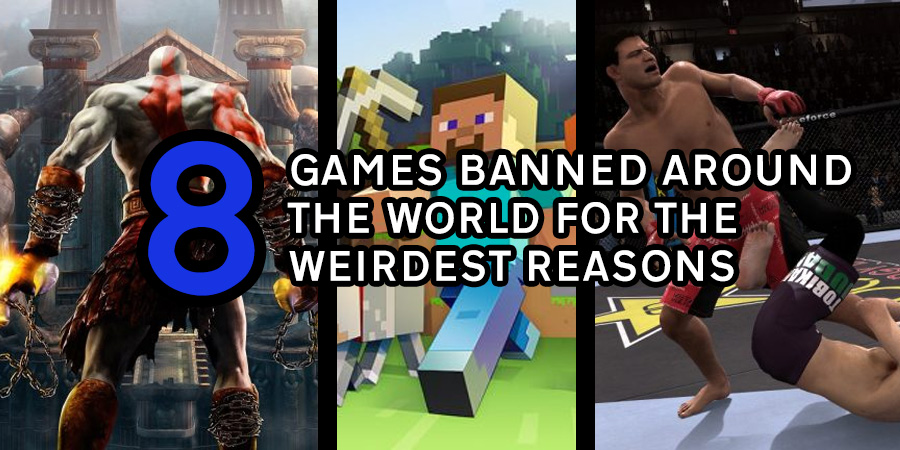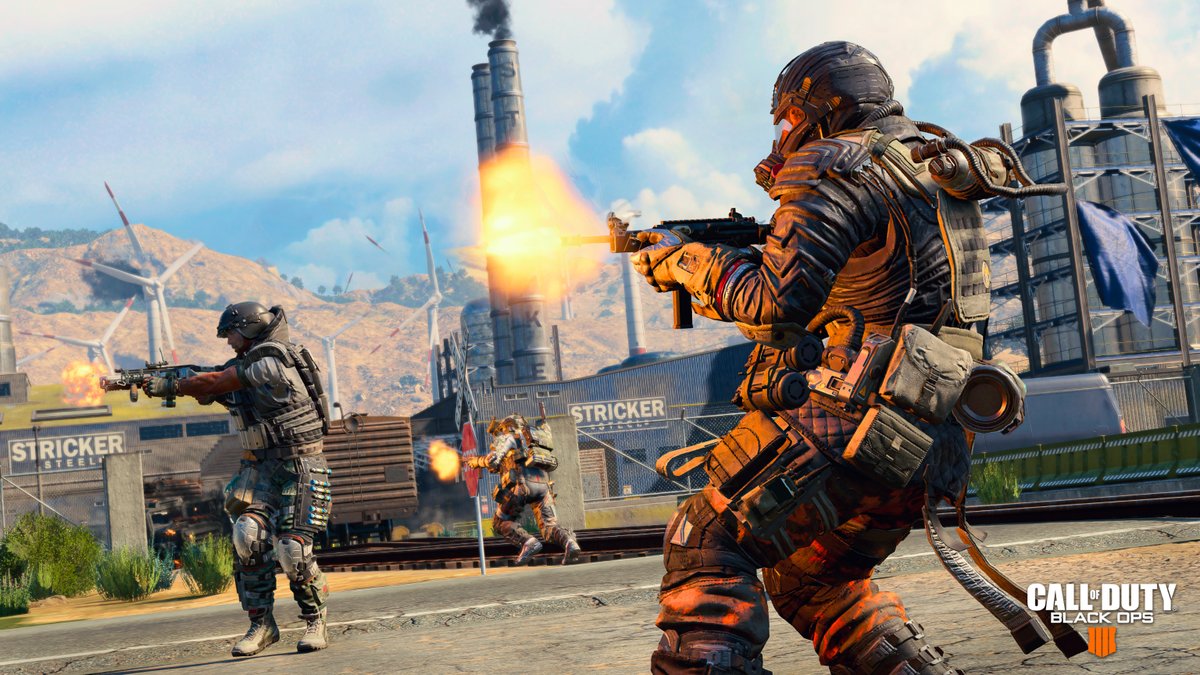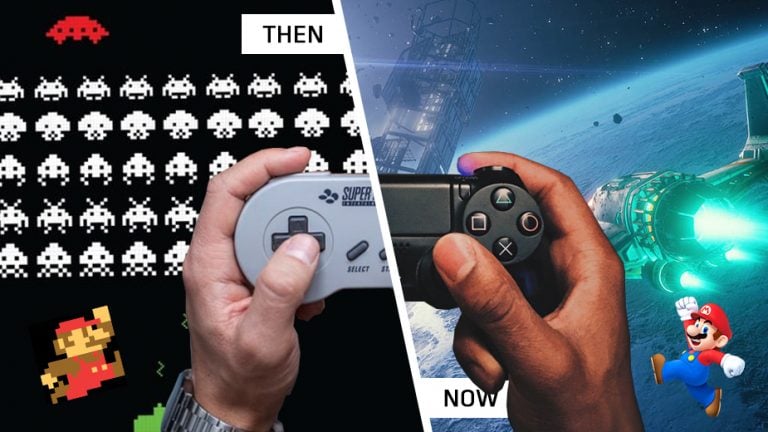
Improvements in technology have brought the video game industry into the future, what with all the bells and whistles of modern games being part and parcel of the hardware and software engineers who’ve given their blood, sweat and tears so as to crank out the best game possible.
For example, we’ve come a long way from blocky-ass 8-bit graphics. Today, a character’s hair may take up five million polygons alone! (Okay, that was an exaggeration. That kind of load would probably turn your computer into Hiroshima 2018). Of course, better graphics is only one thing that’s been accomplished over the years in the gaming industry. Without further ado, have a look at our humble list of gaming improvements:
1. Better controllers
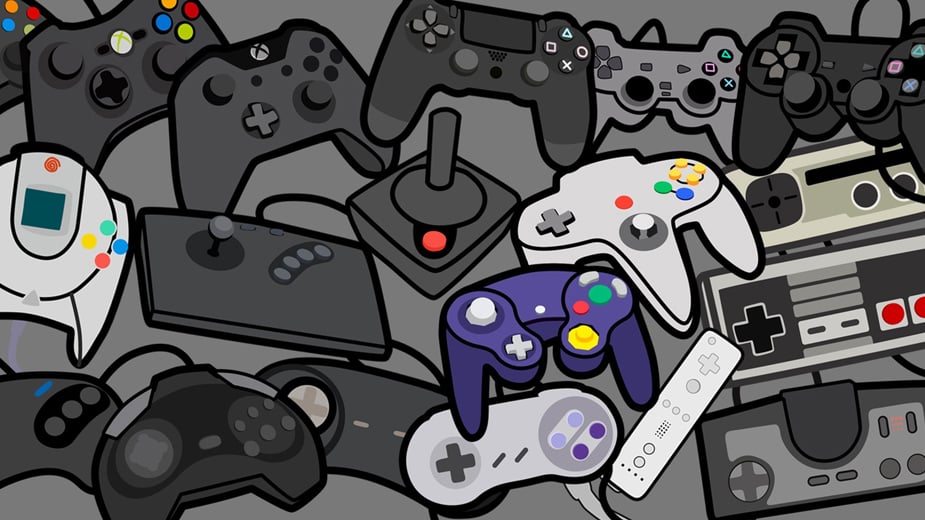
The first gamepad was invented in 1962 when the Tech Model Railroad Club of MIT created a shooter game with spaceships called SpaceWar! Feeling as if the PDP-1’s buttons weren’t good enough for gaming, they jury-rigged their own in a smaller package, where a switch controls the spaceships and the other fires. A few years later, those switches were supplanted by the gamepad design we all know and love today: the D-Pad.
In 1972, the Magnavox Odyssey provided the American public with a taste of the joystick for the very first time. Five years on, the Atari 2600 improved on the Odyssey design. Since then, the Atari 2600’s joystick has been the industry standard for creating new joystick designs, as well as the inspiration behind the creation of analogue gamepads.

Even though joysticks are becoming rarer and rarer for consoles, they can still be found glommed to arcade machines throughout the nation.
We have seen so many innovations throughout the years to make it easier for players to wield a gun or drive stick in-game, especially with gamepads:
- The wireless gamepad, so players don’t hang themselves off the rafters with the crazy jumble that is a gamepad’s cord.
- Shoulder buttons (R1/R2 and L1/L2 on a Dualshock controller)
- HAPTIC FEEDBACK!!!!!!1
- Analogue omnidirectional controls on controllers
- Motion sensors, as exemplified by the Wii Remote
- WASD keys
- And so much more.
2. Mmm… graphics

What once was vector or even text-based (R.I.P Infocom) slowly evolved into 2D bitmap. Now, though, 3D is the industry standard. Maybe someday, we’ll be at such advanced a state of graphics wherein we will no longer be able to tell reality from the game.
However, video games will never make it on the strength of their graphics alone. Many developers, especially indie ones, use 2D graphics. For example, Eric Barone (a.k.a Concerned Ape), made Stardew Valley, a Harvest Moon-esque farming simulator with 16-bit graphics, yet it is still fun to play.

3. Motion Capture Technology

Motion Capture is when you record someone or an object with special motion capture jawns glommed to it, interpreting all of its… motion (YEAAAAAAAAAAAAAAAAAAAH!) to be inputted as posing and movement data for a 3D model in a video game, speeding up everything as you don’t have to manually animate anything anymore.
Rise of the Robots was the first game to use motion capture, but it only became mainstream with the release of Uncharted: Drake’s Fortune. Then, L.A. Noire came out, using MotionScan to create realistic facial expressions (a major part of the gameplay revolves around you analyzing a person’s face to tell if they’re lying or not!), revolutionizing the industry. Not wanting to be left in the dust, Quantic Dreams utilizes motion capture to the max by capturing EVERYTHING for Beyond: Two Souls.
Notwithstanding all that, with their newest game, Hellblade: Senua’s Sacrifice, Ninja Theory has pushed the limits even further on motion capture, by rendering characters real-time.
4. Artificial Intelligence

Speaking of Artificial Intelligence conjures up images of NPCs walking into walls. However, today’s video games are more likely to possess advanced AI. FEAR and Halo 2 have what’s known as the goal-oriented planning action AI (which is Expospeak for KILL THE GODDAMNED PLAYER), with a behavior tree built-in (that means they have specific responses to specific actions by the player). Not all that impressive, I know.
However, Elon Musk started development on a new venture called OpenAI, and one of the projects they’ve been working on is making DotA 2 bots to be more intuitive and harder to beat. Working together with Valve, they invited professional DotA 2 players like Dendi and Arteezy to fight the newly-improved bots. What do you know? OpenAI kicked their asses good.

5. Hollywood-worthy plots
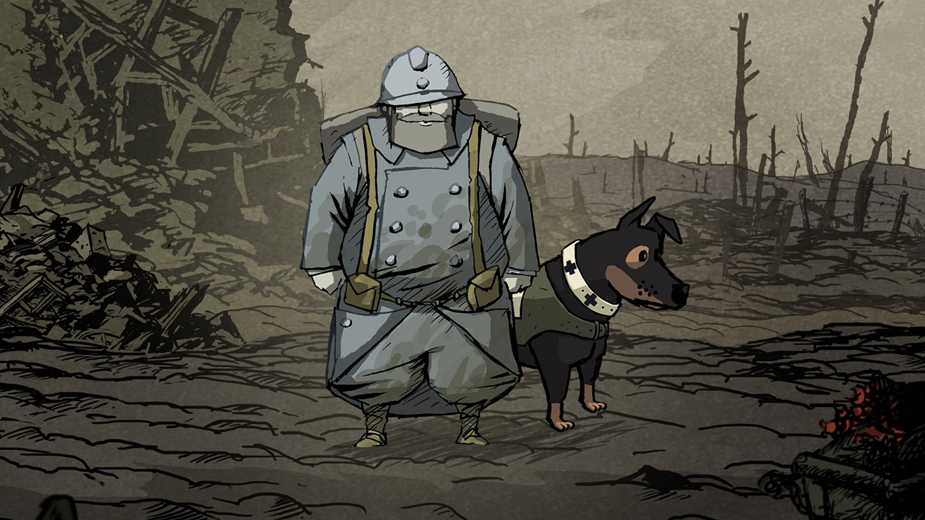
A most fascinating innovation in videogame plots is choices that matter. Once you’ve made one, you can’t go back without restarting or using a save, and the plot ends differently depending on how you choose. For example, in Infamous: Second Son, you’ll get the Bad ending if you keep killing. These games are the province of Telltale (Law and Order: Legacies, the Walking Dead) and Quantic Dream (Heavy Rain, Fahrenheit).
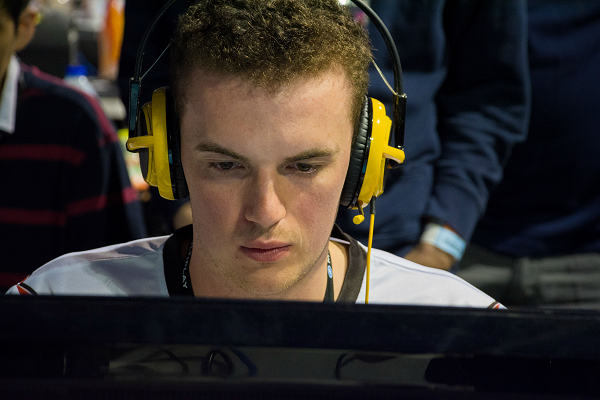
6. Soundtrack

A good plot needs good music, no doy. Space Invaders had 8bit chiptunes, and the closer the aliens got, the faster the music. Today’s video game music is very tailored to each game’s plot. Not just one song, but dozens, even hundreds, making videogame music a sub-industry in its own right. Whether band or orchestra, AAA games never skimp on a dime when it comes to music.
Videogame music is so big, events hand out awards for best music. Like Nier: Automata, they won the Best Score/Music Video Game Award of 2017.
7. MMOs!

The first MMO first popped up in 1986, but only became widespread in the 90s through games like Ultima Online and EverQuest. Even though these early MMOs, just like Neverwinter Nights (1991), could only have so many people on every server (50, for Neverwinter Nights), in 2000, advances in technology allowed thousands of people to gather on a single server for the very first time, paving the way for the massive World of Warcraft.
Of course, not being limited by dial-up is a big boon for MMOs. You probably wouldn’t want to play DotA 2 with a ping in the four digits. Even though RPGs dominate this genre, shooters and strategy games are now also slowly branching out into the field, like Overwatch, CS: GO, PUBG, and so on. This technology has even given birth to eSports.

8. Virtual Reality
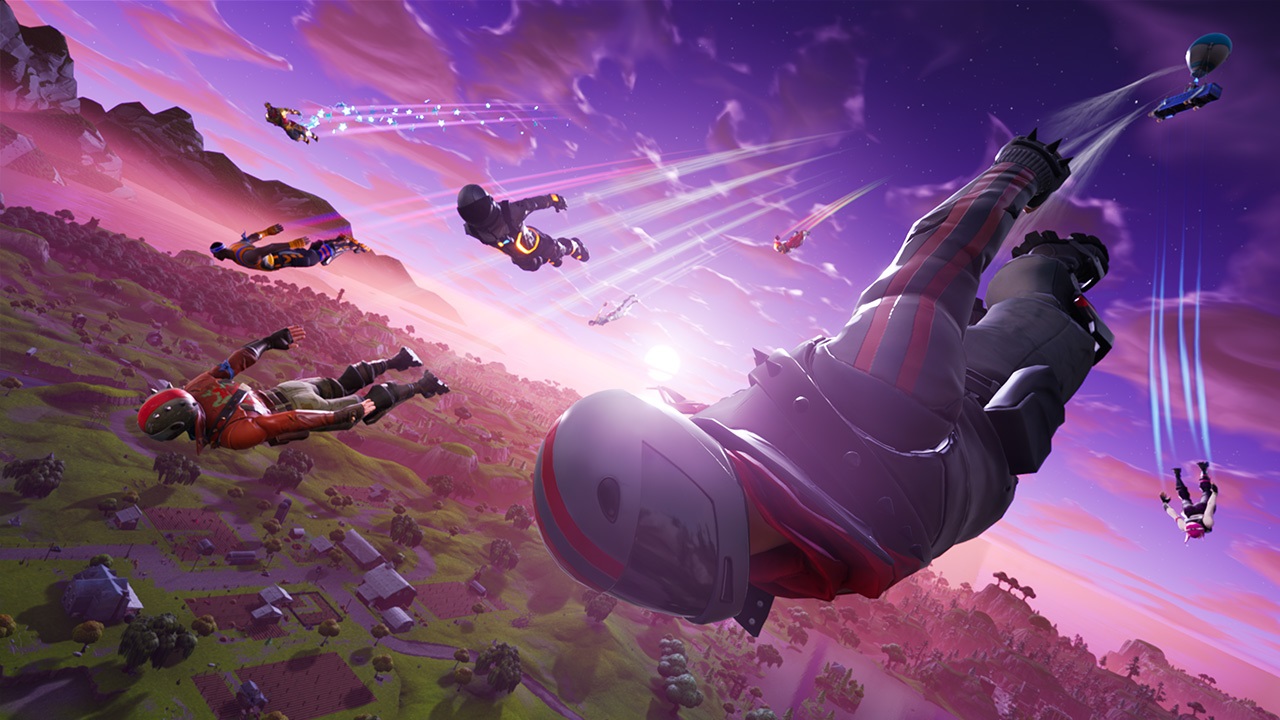
9. Augmented Reality
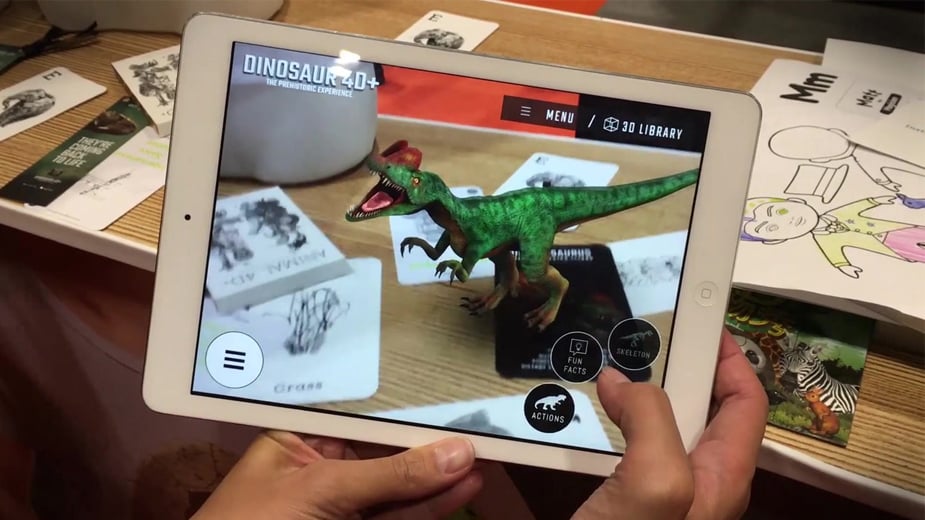
Augmented Reality (abbreviated AR), is a virtual dimension overlaid on top of the real world, using computer technology. A popular AR-equipped game is Pokemon Go by Niantic, where you get to run into traffic chasing Pokemon! Its GPS-assisted interface tells you where the nearest Pokemon are.
Augmented Reality is now also widely used as a promotional medium for video games, especially tech-themed games like Watch Dogs 2.
10. Portability
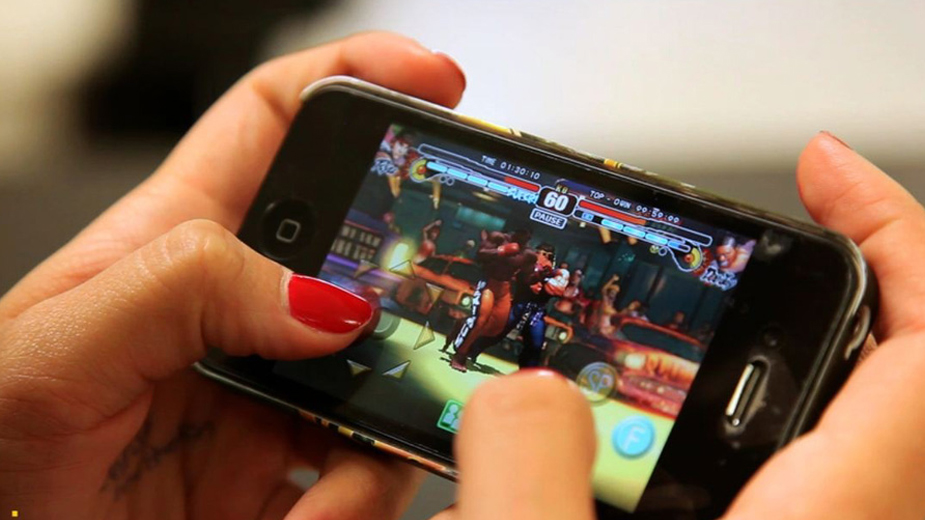
The first handheld game console was released in 1976, but they only took off after Nintendo came out with the Game Boy in 1989. Steadily rising in popularity with the PSP and DS hitting the scene in the Mid-2000s, the train has also stopped at stations 3DS and the PS Vita.
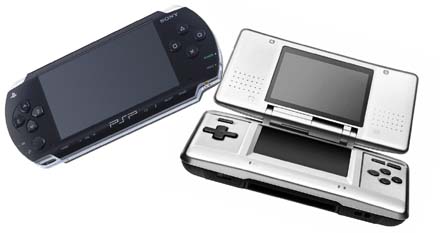
Now, mobile gaming first appeared in 1994 with the launch of Tetris on the Hagenuk MT-2000 cellphone, followed by Snake on Nokia devices in 1997. Moving on to the age smartphones, video games are now an extremely popular way to waste your time while sitting on a toilet with your boss screaming at you to come out outside the door.
Not only that, Nintendo has once more pushed the limits of portability with the new handheld console, the Nintendo Switch. It comes with a docking feature, which means gamers can carry it anywhere like a 3DS, and you can also put it in a dock and connect it to a TV. Awesome.





